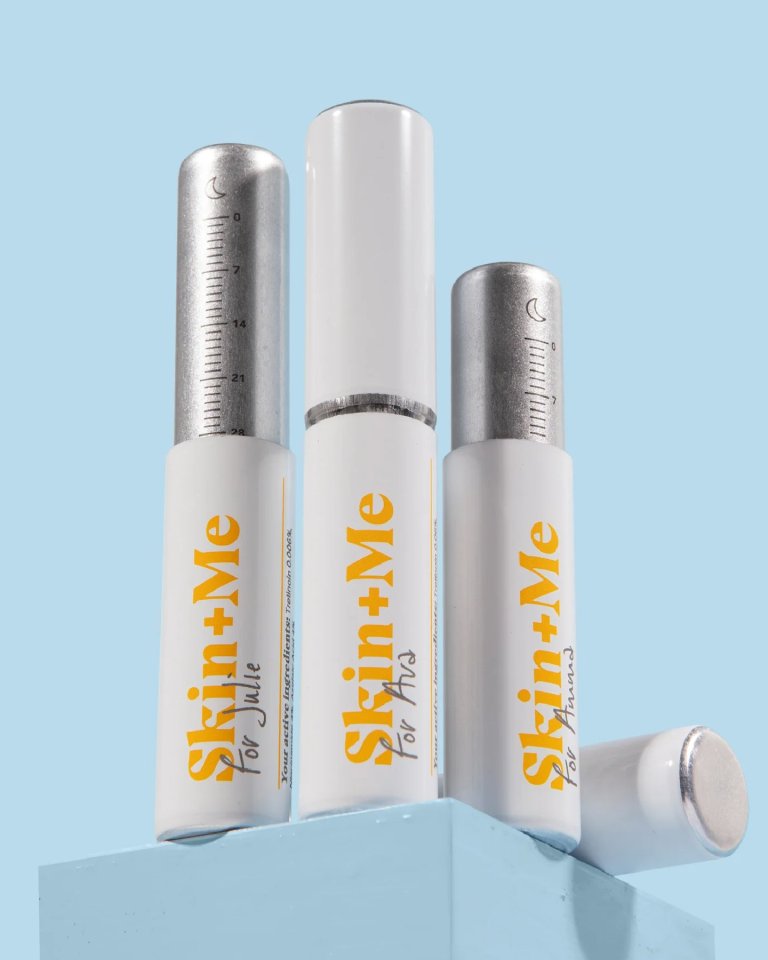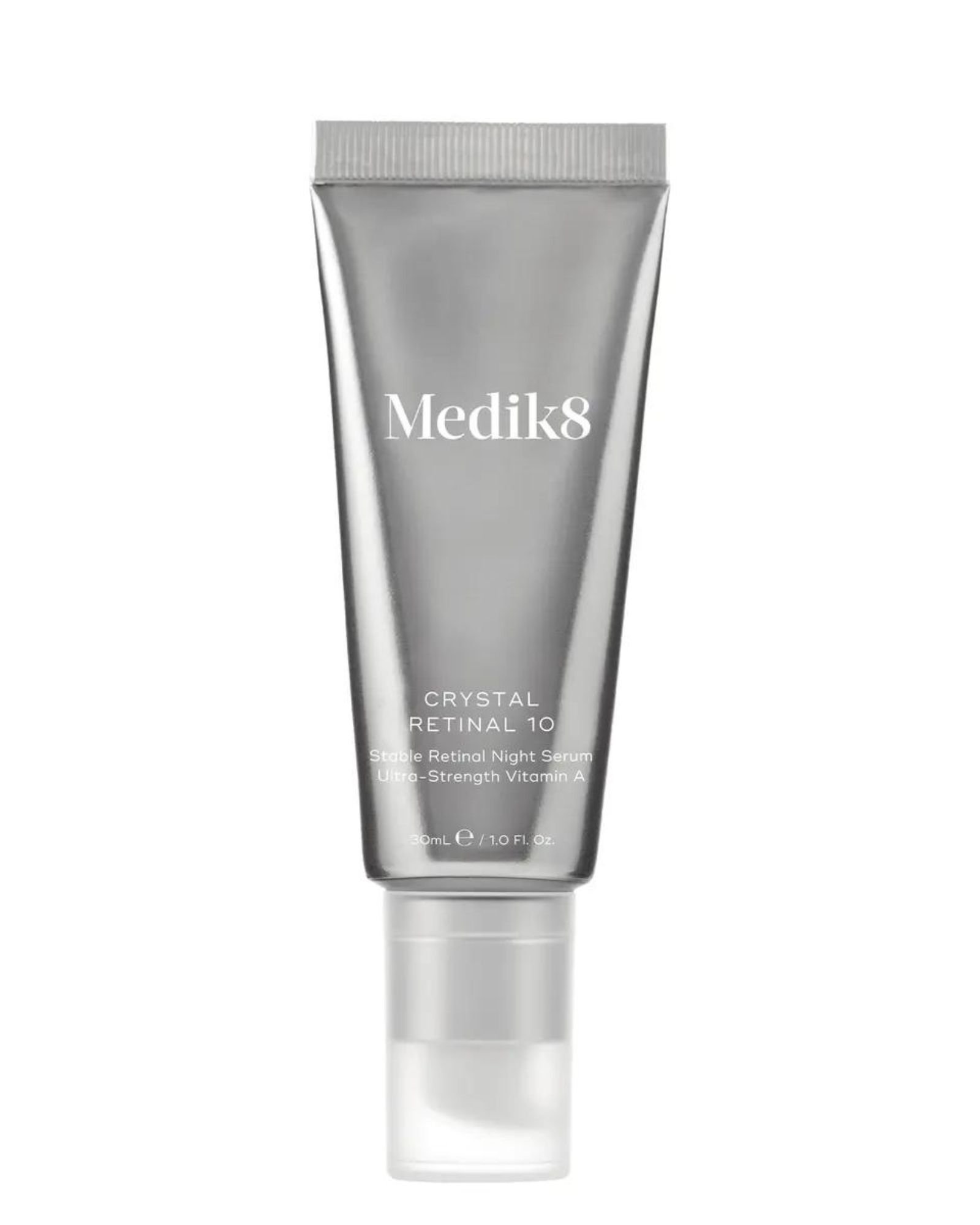De-mystifying certain ingredients, clarifying how to apply products, and revealing everything you’ve always wanted to know about skin types; Eliza Explains will fill you up with beauty knowledge.
Retinoids are a hero skincare ingredient and chances are, if you’re in your mid-20s or over, you’ve considered adding them to your routine. We know retinoids are the number one anti-ageing and all-round brilliant ingredient for the skin, albeit irritating for some, but together with proper cleansing, hydration and a broad-spectrum sunscreen daily, they can create the perfect routine.
There are countless retinoid products on the market so it can be hard to pick the one for you. And when it comes to prescription retinoids, there are two that are most commonly discussed: adapalene (differin) and tretinoin. But what’s the difference between them and which should you be asking your doctor or dermatologist for?
What is differin?
Differin is a product that contains the active ingredient adapalene, a retinoid. Differin is an FDA approved cream that contains 0.1% adapalene, which is part of the retinoids family and is a synthetic version of vitamin A.
In the UK you can also find a stronger adapalene version mixed with benzoyl peroxide: Epiduo 0.3%.
What is tretinoin?
It’s a superstar ingredient that is at the top of the pyramid in the retinoid family; in simple terms, this is ‘pure’ and that’s why it’s prescription-only.
When it was first discovered, tretinoin was used for the treatment of acne. Soon afterwards, experts realised it also had a positive effect on skin ageing and wrinkles, and so it became the skincare hero we know today.
If you’ve ever looked up tretinoin, you might have seen countless articles on irritation, skin drying and even purging. Tretinoin works by increasing cell turnover, so initially, irritation is normal. However, if it persists, you need to stop using the product immediately.
Depending on your needs and your skin’s tolerance, as well as previous use of retinoids, your doctor might advise you to start by using the cream once a week and slowly build it up over a few weeks.
How do differin and tretinoin work?
Retinoids are a group of chemicals that are derived from Vitamin A, an ingredient used mainly for acne and signs of ageing. Apart from increasing cell turnover, which in turn improves the tone and texture of the skin, retinoids also have an anti-inflammatory effect, while also reducing sebum production, which is why they work so well against acne.
Tretinoin is at the top of this pyramid and it’s also known as retinoic acid. This is the only version of retinoids that doesn’t need to be converted (or oxidised) within the skin; the rest have to be converted to retinoic acid. How quickly this is done depends on their strength and type of retinoid.
To note, the term ‘retinol,’ which is often used as an umbrella term, is actually incorrect. Retinol is further down the retinoid pyramid and needs to be converted twice in the skin, so while on one hand, it might be great for newbies, on the other, you won’t see any miracles.
Of course, the golden standard is pure tretinoin, which requires a prescription and can be irritating. The next best thing that doesn’t require a prescription is retinaldehyde; my favourite is Medik8 Crystal Retinal 10.
The retinoid pyramid:
Tretinoin, Isotretinoin (aka Accutane)
Retinaldehyde (or Retinal)
Retinol
Retinol Esthers
How to get adapalene and tretinoin in the UK and the US
Adapalene and tretinoin are prescription-only products: due to their strength, they fall under the drug category. In the last few years (as well as typical GP/dermatology prescription), you can access these fantastic ingredients online via Skin + Me and Dermatica.
These websites essentially give you an online prescription via their team of dermatologists, and your own personalised recipe that may include either adapalene or tretinoin, depending on your needs. You also have the option of requesting specific ingredients for your personalised recipe, which changes monthly.
The US has similar services for your very own tretinoin cocktail, like Curology and Hers. Luckily for our friends across the pond, they can easily get Differin over the counter, at their local CVS, no prescription needed.
In the UK, Differin and other products that contain adapalene are only available via prescription. According to the MHRA (Medicines and Healthcare Products Regulatory Agency), there are currently no non-prescription products in the UK containing adapalene. They are not able to comment if this will change in future, unless a public consultation takes place – these can be found on their website.
Fingers crossed we’ll also be able to get Differin OTC soon!
Who should use Differin and tretinoin?
Both these active ingredients have been extensively researched in regard to their anti-acne properties. Studies have concluded that both adapalene and tretinoin are excellent in treating skin conditions like acne vulgaris and I am living proof of that!
In terms of ageing (or rather anti-ageing, even though I’m not a big fan of this word), tretinoin is the gold standard that targets fine lines, pigmentation, skin elasticity and more. It improves cell turnover and increases collagen production, which naturally diminishes in the skin as we age.
Adapalene has not been studied as extensively for its anti-ageing properties – there is some evidence but it’s not enough – hence, it’s mostly recommended for people with active acne, however that might change in future to include anti-ageing to its many benefits.
Interestingly, studies have shown that adapalene is less irritating than tretinoin. So generally, it suits more sensitive skin types.
My experience with both
I have used Differin as well as Epiduo (adapalene plus benzoyl peroxide) for many years to target my acne and they both work well; the latter is a little stronger due to the ingredient mix. As my acne is mostly around my mouth, I was advised to only apply the product in that area and not all over my face.
I have also used tretinoin for a few years and was positively impressed by the results, both for my acne and my general skin quality. I was glowing, and my skin was much smoother.
My skin did need to get used to tretinoin and I experienced some annoying dryness and peeling at first, but with proper hydration and a thick moisturiser, this quickly subsided.
A little tip I like to follow is the ‘sandwich method,’ whereby you apply your moisturiser on cleansed skin, then wait a bit, apply your retinoid, wait a bit and then add another layer of moisturiser to seal it in.
They are both amazing for my skin, but I would pick one or the other depending on my goals. To improve the texture and tone of my skin, I would always pick tretinoin. But if going through a period of many breakouts, I’d probably use adapalene as it targets the spots with less irritation. Overall, tretinoin works faster but the redness and irritation it causes might be too much for some.
I will leave you with three reminders, whichever you choose:
- Retinoids need to be used for 8-12 weeks to get real results, so be patient!
- If you use tretinoin, you only need a tiny pea-sized amount of product for your whole face. More doesn’t equal better or faster results.
- Of course, using sunscreen daily is a non-negotiable, but take extra care when using retinoids as they may make skin photosensitive.












